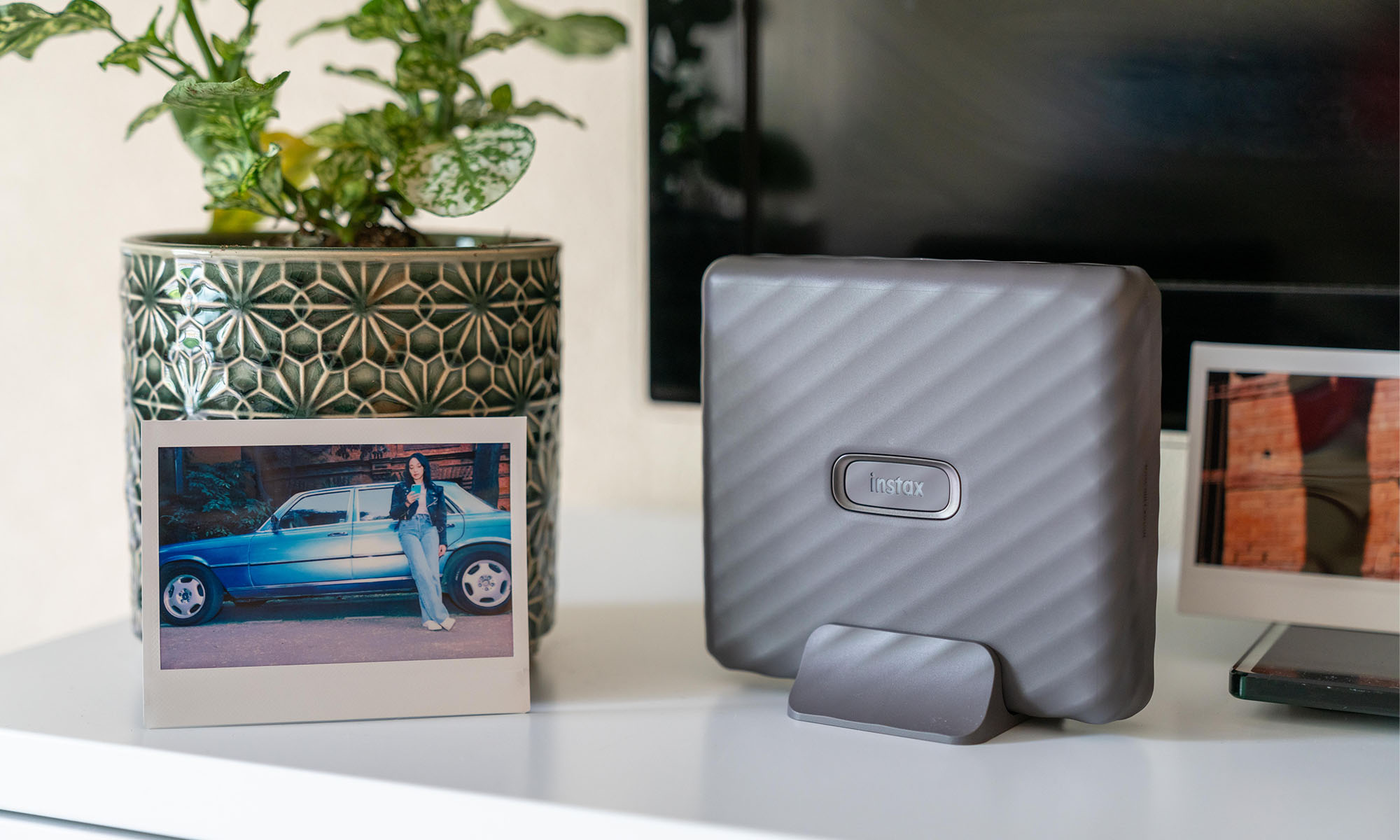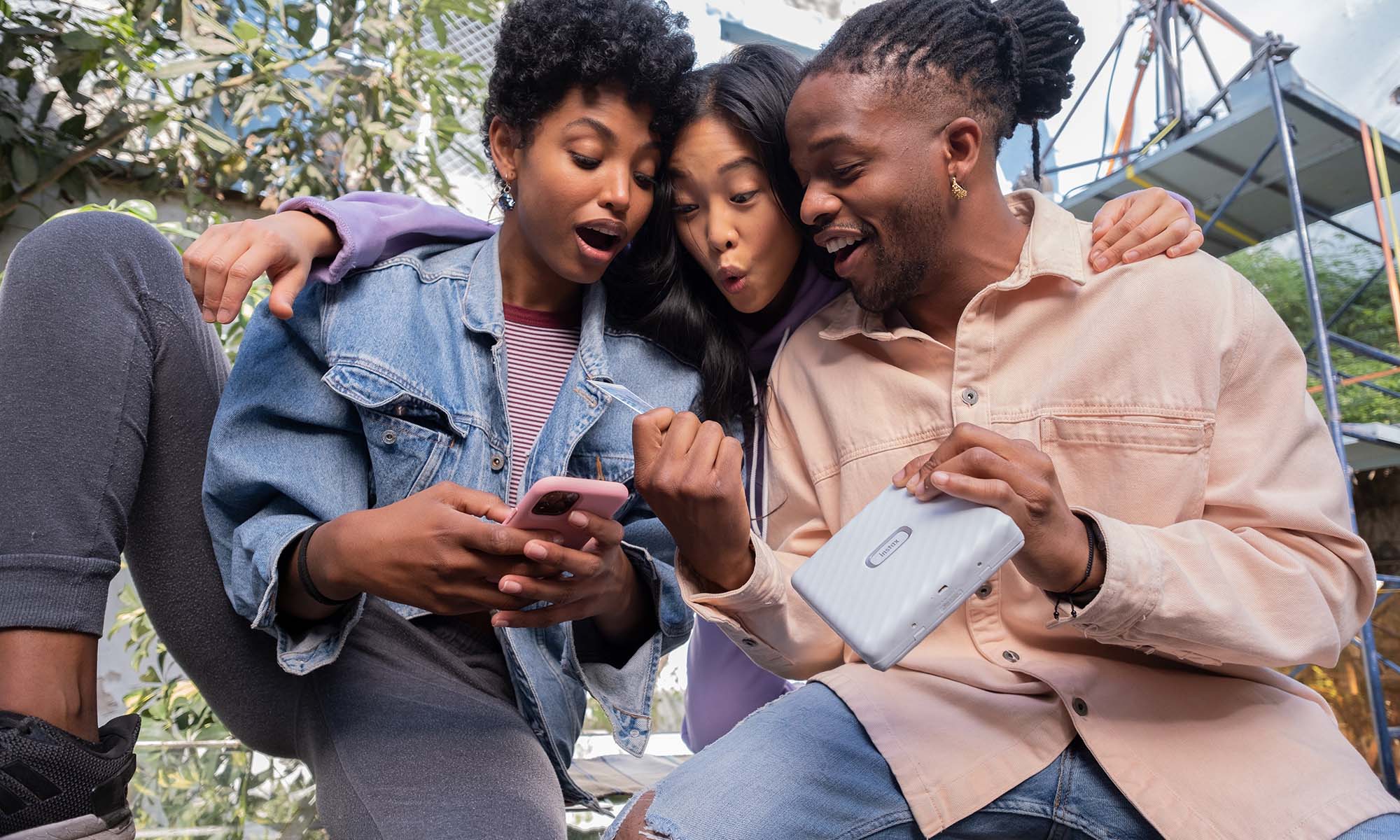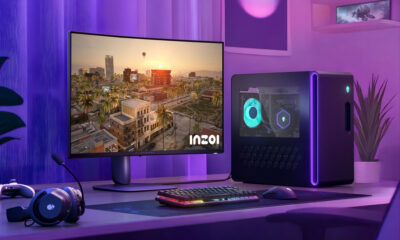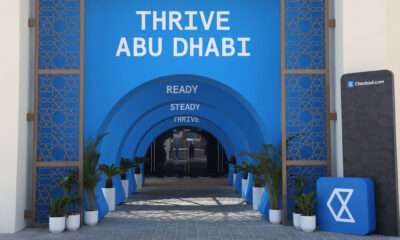News
Fujifilm Launches Instax Link WIDE Smartphone Printer
The new printer builds on the success of the Instax Mini Link, a pocket-sized printer that can effortlessly produce mini-format prints through a dedicated smartphone app.

Fujifilm has recently added the Instax Link WIDE smartphone printer to their Instax lineup.
Bigger, better images. Instax is known for simple, clean, and effective camera products and this Link WIDE smartphone printer is no different. Print photos at the click of a button anytime, anywhere.
The new printer builds on the success of the Instax Mini Link, a pocket-sized printer that can effortlessly produce mini-format (86 mm x 54 mm) prints through a dedicated smartphone app.
As its name suggests, the Instax Link WIDE supports wide-format film. A wide-format film is twice the size of the regular card-size mini-format film, making it suitable for a group photo, landscape photograph or other photographs that benefit from the larger film size (86mm x 108mm).

The Instax Link WIDE smartphone printer has its own smartphone app that introduces an array of features to help users create the most stunning wide-format prints possible. For example, there are two distinct print modes to choose from. The Instax-Natural mode preserves original colors, while the Instax-Rich mode includes contrast and color saturation to produce eye-catching results.
Prints can also feature QR codes. The “QR Print” mode generates a QR code for a voice message, text message, location data, favorite website URL and other information, and incorporates it into a print. Having a QR code representing various types of information printed with a photograph adds another dimension to Instax as a communication tool that records related data and conveys sentiments. This extra layer of information makes prints richer and more interactive.

It can be used to add the voice of a loved one to a cherished photo, include a venue address to a print accompanying a wedding invitation, or make a unique gift card for a friend, family member, or colleague — the possibilities are virtually endless. And because the app comes with 29 design templates, one doesn’t have to be a skilled designer to come up with something beautiful.
Alongside the Instax Link WIDE, Fujifilm has launched a new Instax wide-format film BLACK. The film accentuates photographs by adding a black frame around them, making it especially suitable for prints that will spend their lives on a whiteboard or some other white surface.
Also Read: Fujifilm Has Announced The Instax Mini 11 BTS Butter
The Instax Link WIDE smartphone printer sells for $149 + VAT, and it’s available in two colors: Ash White and Mocha Gray. Just like its smaller sibling, the printer is compact and lightweight. It runs on an integrated battery and charges via a USB cable, so on-the-go printing is easily possible with any Bluetooth-enabled smartphone capable of running the companion smartphone app.
Owners of the Fujifilm X-S10 digital camera have it even better because they can skip the smartphone app entirely and send images directly to the printer.
Fujifilm has been selling Instax cameras since 1998. Today, the company’s instant cameras are sold in over 100 countries around the world. They’re especially popular among younger generations, who see them as a welcome relief from the digital overload we all experience today.
Fujifilm Middle East will be announcing the official release dates of the Instax Link WIDE smartphone printer, so make sure you’re following them on Facebook and Instagram for all the latest updates.
News
Influencer Growth Fuels Saudi Creator Economy Surge
The Kingdom’s creator economy grew over 32% in Q1 2025, fueled by TikTok, UGC, and cost-per-action (CPA) influencer models.

Saudi Arabia’s creator economy saw a significant 32.37% growth in the first quarter of 2025, driven by an uptick in influencer marketing, content-driven e-commerce, and the increasing influence of user-generated content (UGC). These insights come from a recent study by Admitad and the Stllr Network.
Much of this momentum is coming from video-based platforms, where brands are leaning on creators who feel more relatable than polished ad campaigns. The trend shows a clear preference for authenticity, as audiences gravitate toward content that feels real and personal.
Mohannad Alzahrani, Co-founder and VP KSA of Stllr Network, highlighted the shift: “The rise of user-generated content (UGC) is changing the way brands engage with consumers. Audiences trust real creators more than traditional advertising, making UGC a key driver of authenticity and sales”.
TikTok remains the dominant platform in this space, reportedly reaching 88% of the Saudi population. It also showed the sharpest rise in influencer-led transactions. Other platforms followed with solid, if less dramatic, growth: X was up 17%, Instagram increased by 12%, and Telegram by 10%.
In terms of content niches, beauty led the pack with a 56% growth rate, followed by lifestyle at 45.8% and fashion at 18.2%. Tech content also showed healthy traction at 10.6%, while entertainment, food, fitness, parenting, and gaming posted smaller — but still positive — gains.
Also Read: Top E-Commerce Websites In The Middle East In 2025
The report analyzed more than 300,000 influencer-driven purchases. These efforts translated into a 15% year-on-year jump in Gross Merchandise Value (GMV) and a 5% increase in the number of orders in 2024. Influencers themselves are seeing the benefit, with average order values hitting $54 and creator earnings rising by 14%.
A noticeable trend is the move away from fixed-rate deals. More influencers in Saudi Arabia are embracing hybrid compensation models — especially cost-per-action (CPA) setups that tie their earnings directly to performance.
As Anna Gidirim, CEO of Admitad, explains, “The CPA model brings much-needed transparency to influencer marketing. Brands only pay for actual results, and influencers benefit by securing long-term partnerships while offering their audiences exclusive promo codes and special discounts”.
However, the ecosystem still shows a gender imbalance. The data indicates that 63% of creators in Saudi Arabia are men, while women account for just 37%.























